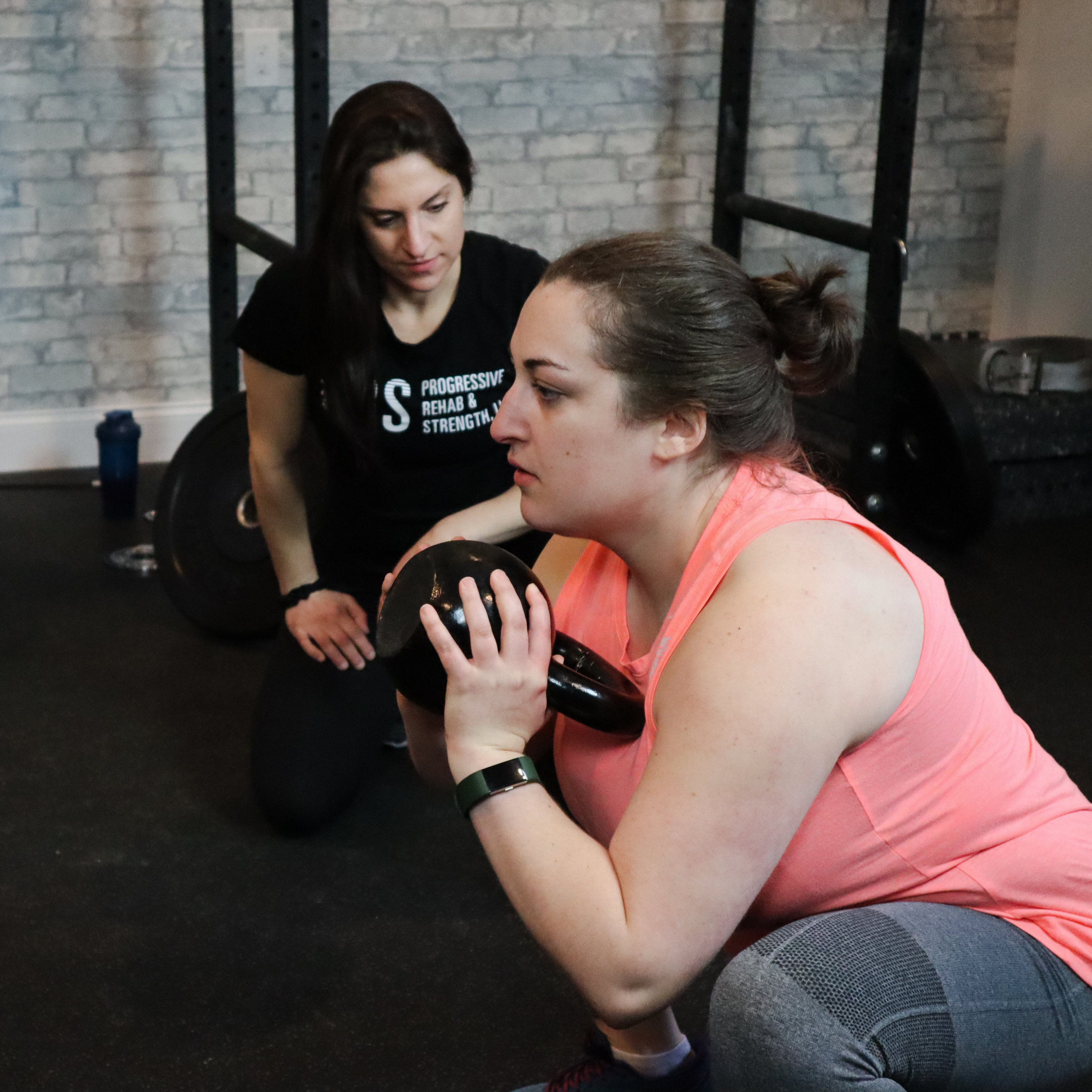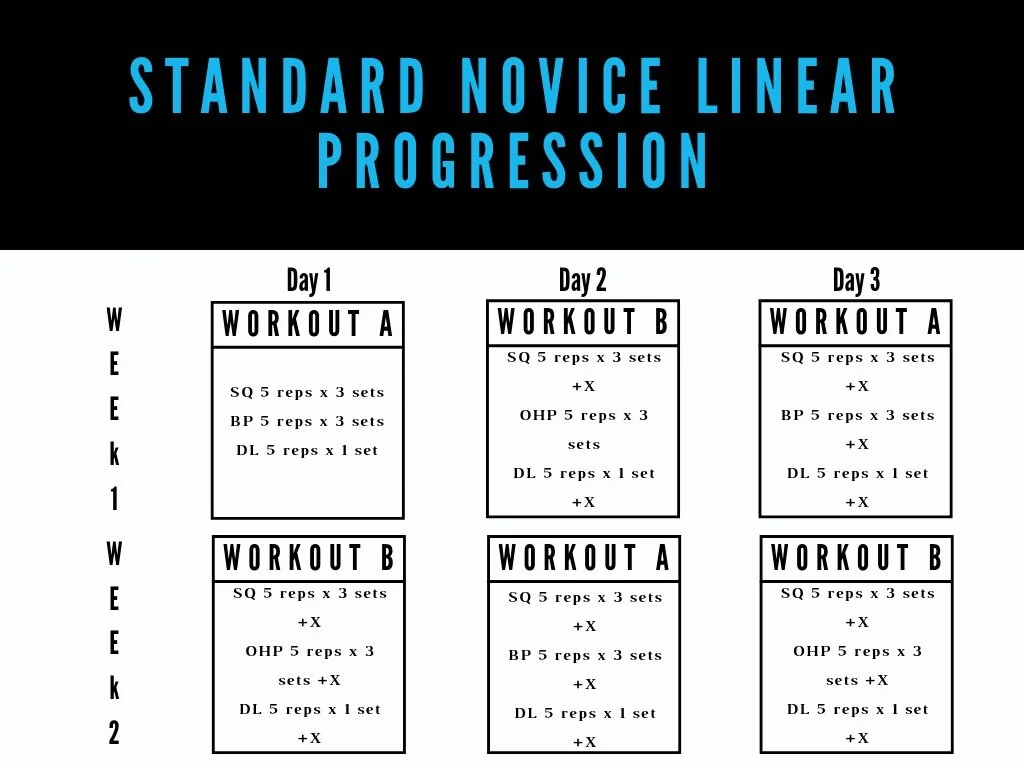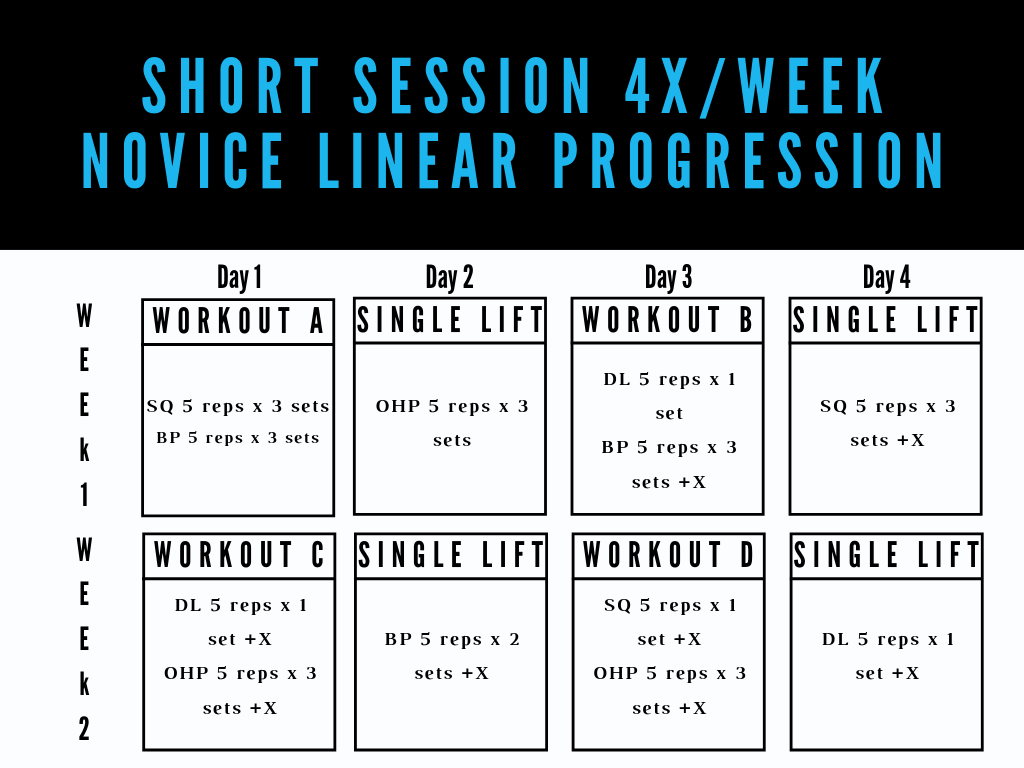One of the biggest reasons people have for not starting resistance training with barbells is not knowing where to start. They’ve either done no research at all or feel overwhelmed by the sea of questionable information from Youtubers, Instagram Gurus, and certified-by-who? Strength Coaches out there in internet land.
These movements and programs seem overly complicated and can be overwhelming to someone with little experience in the gym, with crazy exercise variations, and lack of access to fancy/weird equipment. So what do they do? Either they fail at starting strength training, or they stop before they ever reach their goals because the crazy bizarre stuff is just too complicated to be consistent with or it ends up hurting them.
If you’ve found this article, you’re on the right track. You’ve sifted through the crazy stuff out there and have recognized that here at Progressive Rehab & Strength we’ll lay it out for you with the simplest most effective way to reach your individual goal.
The best framework that we’ve found for resistance training is simple, facilitates technique development and training enjoyment, and can be progressed simply for an extended period. When things are overcomplicated, it slows your ability to adapt because you take longer to become proficient at doing it well. This goes for the movements and the program! Overwhelm typically gives rise to frustration leading to poor performance, slower results, and the loss of motivation to continue with the program.
For this reason, we recommend the Starting Strength Novice Linear Progression (NLP) framework for individuals who have little to no experience following a resistance training program that consistently progresses the tonnage (number of working reps multiplied by the load used) for 2 or more months as the best place to start when your goals are to:
Get stronger
Improve your health
Build more muscle
Get into powerlifting
Enhance your body composition
Some of the biggest reasons people don’t start the Starting Strength program is because they feel they don’t have time, don’t know how to do the movements, or they aren’t strong enough to lift a 45 lb barbell. This is a perfectionist mindset and something that will stop you from ever reaching your goals. After we discuss the basic framework of the NLP, we’ll go on to discuss how you can adjust it to overcome all of the perfectionist excuses you might have.
The Starting Strength NLP that we’ll breakdown below is a basic framework that we use as a starting point with our novice clients or clients coming back after an extended layoff (1 or more months of inconsistent training). We employ additional exercises based on the individual needs of our clients that are not outlined in the program below and are beyond the scope of this article.
This strength training program was designed based on a few concepts:
The exercises are chosen because they utilized the greatest amount of muscle mass and can be progressively overloaded in small or large increments. They are expected to be performed with the Starting Strength movement model meaning they utilize the greatest amount of muscle mass throughout the largest effective range of motion to help you lift enough weight to get as strong as possible. This is why the low bar back squat is used over front squats high bar squats, hack squats, or any other squat; the medium grip bench press is chosen over the incline bench press, close or wide grip bench press, etc.; the overhead barbell press is selected over the dumbbell or kettlebell press, and the conventional deadlift is chosen over the sumo deadlift, trap bar deadlift, Jefferson deadlift, stiff leg deadlift, etc.
The reps, sets, exercise layout, and weekly training frequency are all formatted to allow the process of getting stronger to occur for as long as possible. The concept for this is known as “Stress, Recovery, Adaptation.” We talked about this concept in our last article that you can read here. To get stronger, some type of stress that is greater than what you are used to needs to be applied to your body. You then spend time recovering from it to facilitate adaptation. If you have adapted, it means that the load that was once enough to cause stress, is now your new normal and you’ll need more to provoke the cycle to repeat itself. Congratulations. You got stronger.
Here’s what it looks like:
Workout A
Low Bar Back Squat 5 reps x 3 sets
Medium Grip Bench Press 5 reps x 3 sets
Conventional Deadlift 5 reps x 1 set
Workout B
Low Bar Back Squat 5 reps x 3 sets
Barbell Overhead Press 5 reps x 3 sets
Conventional Deadlift 5 reps x 1 set
This program is very simple: each session builds upon the previous. Check out our Instagram post that lays out exactly how to figure out what weights you should start the program with.
This is the primary starting point for most people, but many people will look at this without ever starting or will stop very quickly upon beginning. Why? Because if they can’t do it perfectly, they might as well not do it at all. This really isn’t a great excuse! What the perfectionism mindset often comes with is the inability to understand that this is a framework and can and should be adapted to the individual if there is some reason that it cannot be executed the exact way it is written.
Time is probably the biggest reason people might not start this program. According to the template, it requires a commitment of 3 times per week. Absolutely no exceptions. If you can’t go to the gym 3 days per week, you must not do this program. Right? Wrong! This Starting Strength program can easily be performed 2 times per week. Will you have the same outcome as if you were able to dedicate 3 times per week? Likely not, but at least there will be an outcome instead of nothing if you throw it out the window before you start. Below is how that would look:
Another time constraint that people often have is the total time they can or are willing to spend at the gym from start to finish. Initially, these workouts move pretty quickly; the average person can get through the A/B workouts in 45 minutes to an hour for the first few weeks. But when things start to get a little hard, and you need more rest, the workouts begin to take longer.
The default behavior of many people is to skip the workout entirely because they don’t have the total time they need to finish the whole workout. But can we all agree that some training is better than none? So instead of throwing in the towel and skipping a workout or stopping altogether, we’ve got two viable options for you.
Break up the workouts (see below).
Breaking up the workouts can have many different looks so for the sake of brevity, we’ll provide a 3-day and 4-day options if you have 45 minutes to an hour available for the workouts. If your rest periods take a long time because you’ve been doing this a while and your lifts are relatively heavy, you’ll want to implement the below strategies with the article (#2) linked above.
Dropping a lift and training 3 times per week should be a viable option. While this will decrease your overall frequency of the lower body lifts, it should still be enough to progress you forward more than not training at all.
Workout A
Low Bar Back Squat 5 reps x 3 sets
Medium Grip Bench Press 5 reps x 3 sets
Workout B
Conventional Deadlift 5 reps x 1 set
Barbell Overhead Press 5 reps x 3 sets
Mind-blowing. I know.
If you’re very limited on time but can drop into the gym 4-5 days per week this next option might be better for you. The intention behind this format is to train the lower and upper body 3 times per week while allowing for recovery for the respective areas of the body. Some days will be longer or shorter and have one or two lifts, but if executing rests and warm-ups according to the article linked previously (and again here), these sessions should take no longer than an hour at most.
Workout A
Low Bar Back Squat 5 reps x 3 sets
Medium Grip Bench Press 5 reps x 3 sets
Workout B
Conventional Deadlift 5 reps x 1 set
Medium Grip Bench Press 5 reps x 3 sets
Workout C
Conventional Deadlift 5 reps x 1 set
Barbell Overhead Press 5 reps x 3 sets
Workout D
Low Bar Back Squat 5 reps x 3 sets
Barbell Overhead Press 5 reps x 3 sets
Now that we’ve figured out how to structure the NLP so that time is no longer the roadblock to starting, the next big excuse that gets thrown around is not knowing how to do the movements or execute the program correctly.
This is usually connected to another common excuse, “I don’t have the money for a coach,” or “I don’t live near a coach,” therefore “I cannot do this without hurting myself or screwing up.”
Because we know this is a limiting belief that stops people from getting under a barbell and changing their lives, we’ve made it unbelievably easy for anyone to learn how to lift and get help with starting in a safe and extremely cost-effective (because it’s free) way!
We’ve already laid out the program structure, so get yourself a journal and write it down. But what happens when 3 sets of 5 reps gets so hard that your form starts to fall apart, you miss a lift, or you get anxious about training? Fear not, we’ve got two articles that will really help you along your strength journey!
In the article, Progression Without Regression, we help you recognize when the program needs to change and what changes to make. And in this article, PRS Clinical Coach, Dr. Rori, talks about how to reset if you miss lifts or take an extended period off (though you shouldn’t need this article if you’re following the one you’re currently reading and using the Progression Without Regression article as well!).
Now, you might still worry about the technical execution of the lifts. We get that! That’s why we not only created in-depth youtube tutorials on the Low Bar Back Squat, Conventional Deadlift, and Bench Press and recommend this video for the Overhead Press, but we also created an entirely FREE Facebook group, the PRS Secret Society of Barbell Mastery, where the PRS Clinical Coaches provide free form checks every Wednesday and Friday. No strings attached. We created this Facebook group so you’d have a safe environment where you can get the help you need without fear of internet trolls and unsolicited terrible advice. Feel free to post up to 4 videos for review on Wednesday and 4 for Friday. That’s 8 free video reviews per week! You have no excuse! We also encourage you to ask questions about your program at any time, and we’ll do our best to provide support in a timely fashion.
So now, not knowing where to start, not having time, proximity to and finances for, a coach should no longer be excuses for not starting your strength training journey! Watch our videos, join our Facebook group, get yourself a training journal, and get started on getting strong today!
If you're interested in learning how to optimize barbell technique, maximize strength and muscular development, and reduce injury risk (and peeing) for you, your clients or patients, then join the waitlist to get insider information on all the PRS online courses when they're ready for enrollment!





